'A remarkable thing': World War II veteran's uniform makes it back to Northfield Center
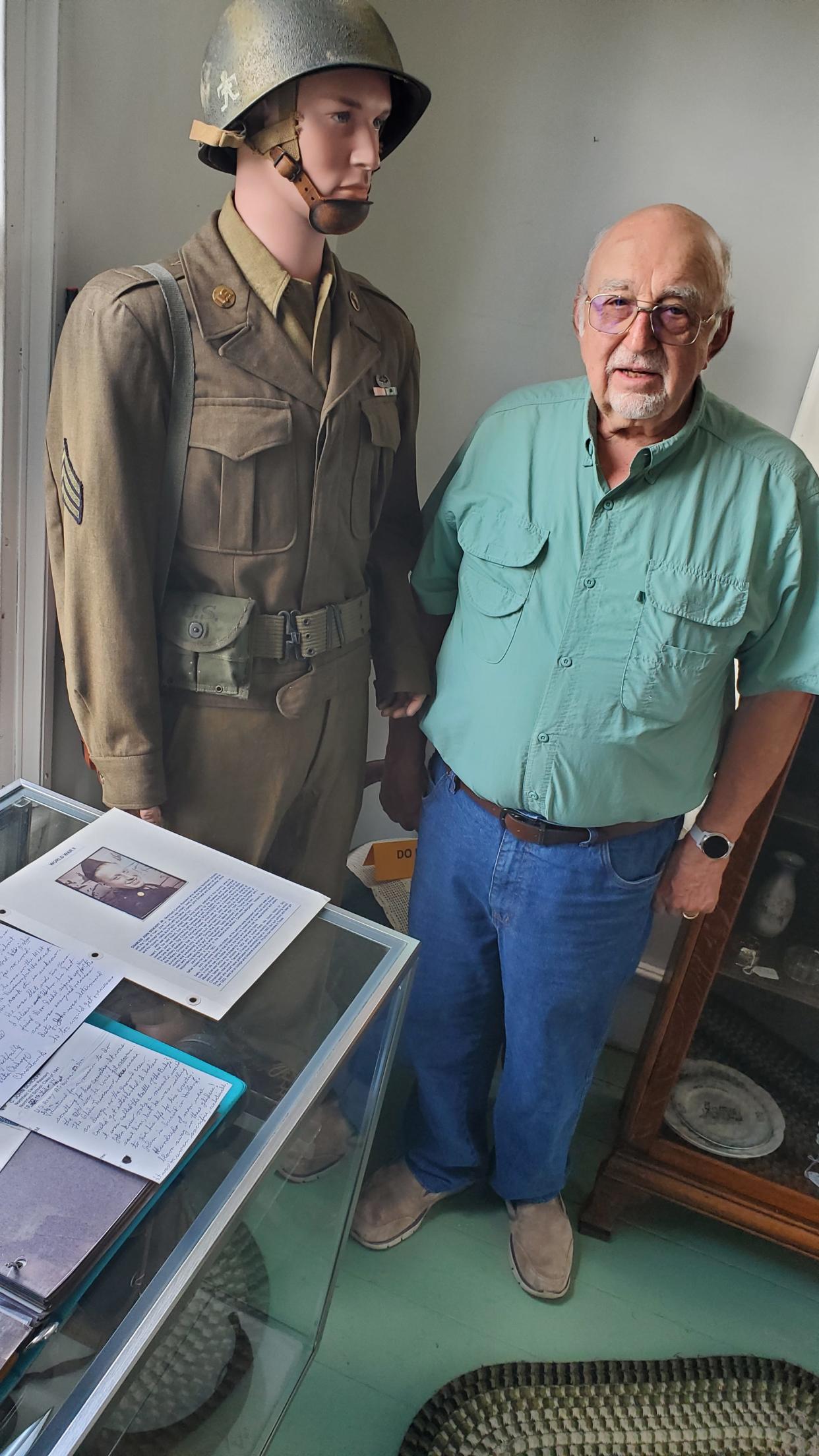
On the black granite veterans memorial wall in the Northfield-Macedonia Cemetery, Sgt. Charles J. Schoepf's name is listed as one of the honored dead, along with other local veterans of America's wars.
In a corner of one of the first homes in historic Northfield Center Township, part of his uniform is on display after making an improbable journey home.
Paying tribute: Memorial Day 2022 events planned throughout Greater Akron
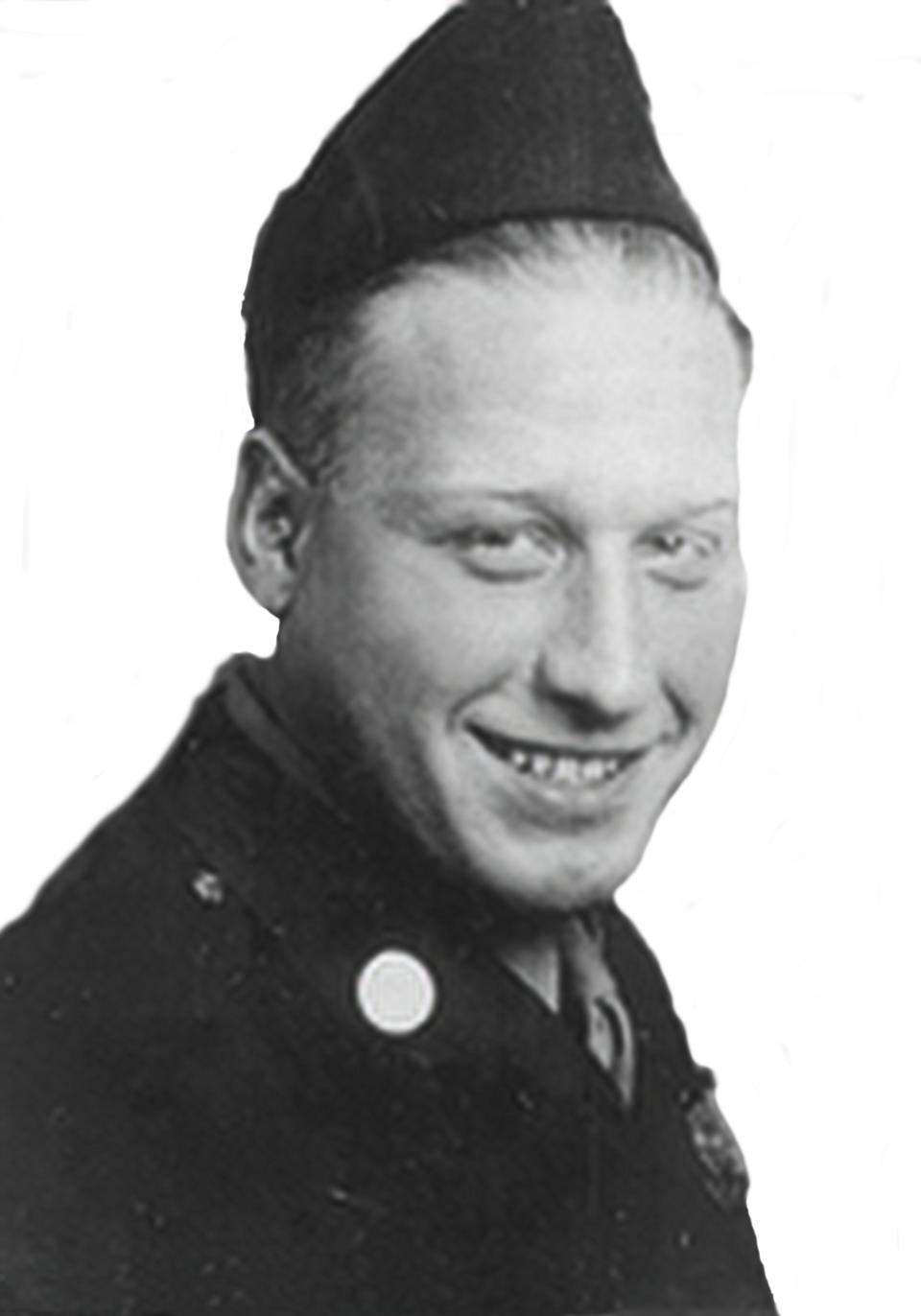
Rick Devine, a trustee of the Historical Society of Olde Northfield, said the group was contacted last summer by a Texas man who had purchased Schoepf's uniform and wanted to donate it to the society's museum.
"It's just a remarkable thing – this guy bought this at an auction ... and he thought it was a shame that this guy was killed in World War II and someone was auctioning it off," Devine said.
Uniform returns home
Russell Davis, who collects war artifacts, said he saw Schoepf's uniform for sale at an online auction site and paid around $500 for it. He initially planned to donate it to a museum where he lived.
"The thing that really caught my eye was that he was killed in action and the auction had details on how he was in World War II and he was killed in action ... evidently, from my knowledge, he never got married, he didn't have kids."
Davis said he ended up tracking down the historical society in Northfield and contacted Devine. He plans to visit Northfield Center sometime this summer with a dummy artillery round to add to the exhibit.
Schoepf's body rests overseas, along with more than 8,000 others at the Netherlands American Cemetery. He was born on Aug. 14, 1922, and died on March 24, 1945.
He was 22 when he was killed on the first day of the largest single-day airborne operation of World War II.
Operation Varsity involved more than 16,000 paratroopers and glider infantry who flew into the north side of Wesel, a city just east of the Rhine River in Nazi Germany. Their drop zone was an area as big as two Ohio townships.
Remembering the fallen: These 13 Summit County men made greatest sacrifice in war on terror
Operation Varsity: The invasion of Germany
According to the National Museum of the United States Army, planning for Operation Varsity had started before the 1944 winter German offensive in the Ardennes Forest, where 19,000 American soldiers were killed, about 47,500 were wounded and 23,000 were reported missing.
The December-January Battle of the Bulge came just months after the largest airborne assault in history, Operation Market Garden, where in September 1944 the Allies dropped forces in advance of armored columns on multiple objectives up to 50 miles into Nazi-occupied Netherlands.
Wesel is only 50 miles from Arnhem, Netherlands, the site of Market Garden's farthest objective and the so-called "Bridge too Far" over the Rhine, where hundreds of British and Polish paratroopers ended up isolated and defeated.
Allied planners were determined to avoid the Arnhem disaster and designed Operation Varsity as a shorter-range insertion to support a British amphibious crossing of the Rhine.
The 17th Airborne was picked to accompany the British 6th Airborne for the mission.
Schoepf's unit, A Battery, 680th Glider Field Artillery Battalion of the U.S. Army, saw its first action in Ardennes, where they were trucked in from England to assist with the Allied counterattack. Historians say that combat experience qualified it for the assault on Wesel, which would be its first combat airborne operation.
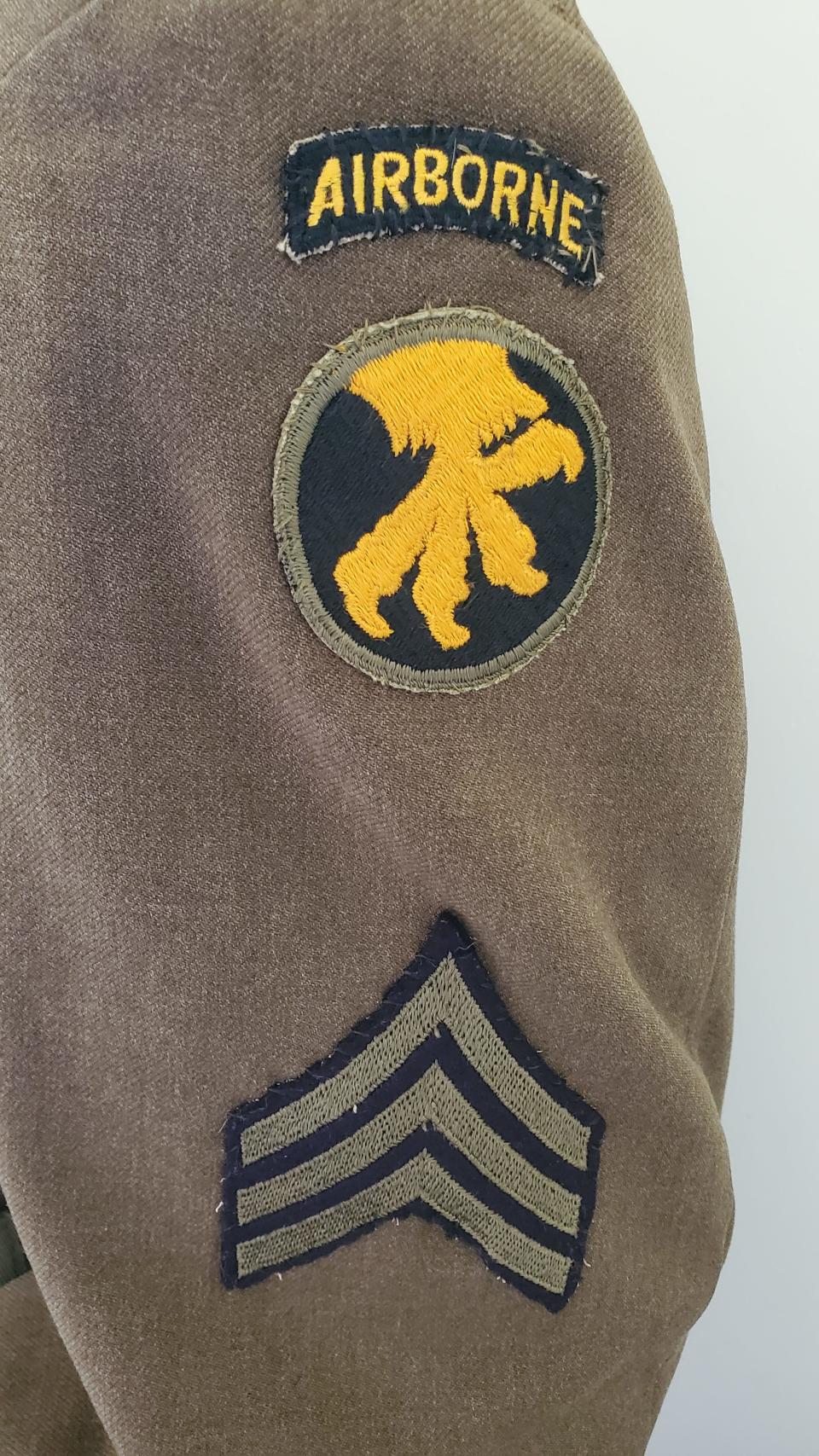
Surprise donation
Schoepf's uniform that is now on display came with a mannequin sent to the township, along with boots, a paratrooper helmet and other items that were enough to make a solid exhibit at the Palmer House, the Historical Society of Olde Northfield's museum on Olde Eight Road in Northfield Center next to Northfield Elementary School.
"We thought it was just going to be a uniform," Devine said.
"We've done quite a bit of work in setting it up, and we've had several people donate articles from World War II," he said.
In addition to the mannequin displaying the uniform, the exhibit includes historical documents that detail the story of Schoepf and his unit.
The Palmer House Museum is open 9 a.m. to noon on Memorial Day. After that, the museum is scheduled to be open 1-4 p.m. the fourth Sunday of each month. For more information, see the society's website at https://www.hson.info.
From North Carolina to war
A unit history of A Battery, 680th GFAB counts Schoepf as one of the original troops at Camp Mackall in North Carolina, just west of Fort Bragg. The camp is named after Wellsville, Ohio, Pvt. John Thomas Mackall, who died in the Allies' 1943 invasion of North Africa.
"Those first few weeks we were more of a labor battalion than a field artillery unit, because Camp Mackall in those days was only half finished and it was our first job to finish it," the history states.
After construction was completed, the unit began to train.
"On May 6, 1943, we began our 13 weeks of the well-known Basic Training – calisthenics, dismounted drill, weapons, military courtesy, interior guard, care and cleaning of material, road marches, reveille, retreat ...
"The heat was terrific. There were twenty-five mile hikes, five-mile-in-an-hour hikes, nine-miles-in-two-hours hikes, regulation afternoon road marches, marches to the Fort Bragg range and back," the history continues. "Marches here, marches there, marches everywhere. Our aching backs. We began to feel strange if we weren't marching – and we were supposed to be Airborne."
While Schoepf was listed as one of the initial members of the battery, he did not end up on the roster of those who became parachute qualified. Instead, he ended up with the glider troops.
More: Akron veteran seeks answers in WWII death of a relative he never knew
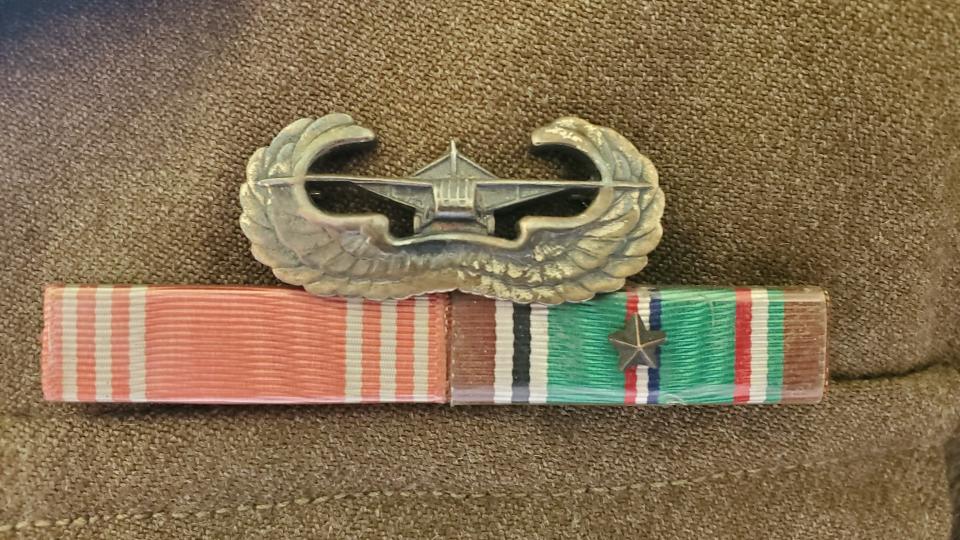
Thousands of aircraft, soldiers in Operation Varsity
On March 24, 1945, it took two hours for the 17th Airborne Division's aircraft to get off the ground from a dozen airbases around Paris.
There were more than 900 C-46 and C-47 transport planes and just over 900 Waco CG-4A gliders carrying men and equipment. Due to the short distance to their objective (100 miles), many transport planes were able to tow two gliders, according to the National Museum of the United States Army, which describes the operation.
Holly Christensen: War veteran, 99, still feels survivor's guilt
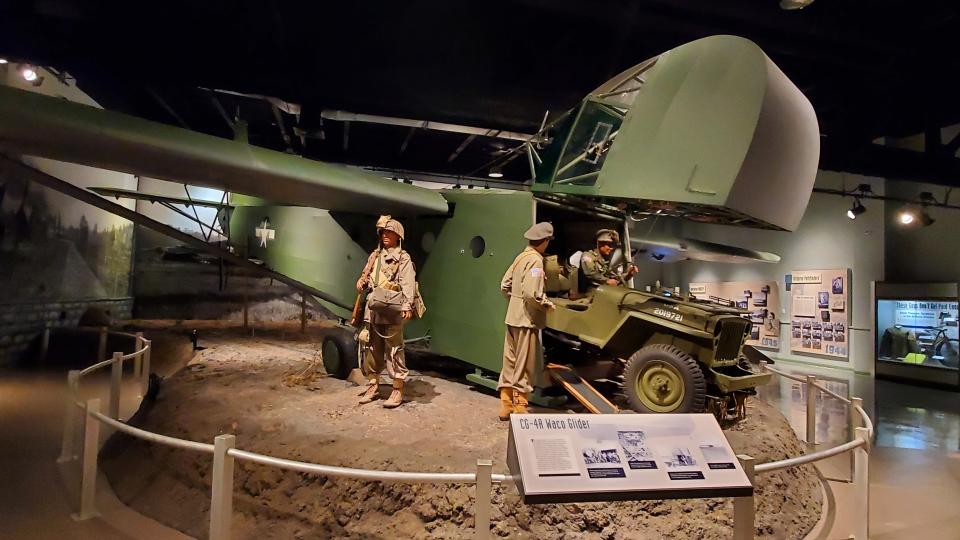
The British 6th Airborne Division joined the Americans over Brussels with nearly 800 aircraft and 420 gliders. About 1,000 fighter planes were also aloft in support of the operation.
In all, the aerial armada is said to have stretched 200 miles and took 37 minutes to pass over Gen. Dwight D. Eisenhower, Supreme Commander of the Allied Expeditionary Force in Europe, and British Prime Minister Winston Churchill, who were among those observing from the ground.
"The soldiers of the 17th Airborne were served a hearty breakfast of steak and eggs before being loaded into trucks and taken to the aircraft and gliders which would transport them to Germany," states the Army museum.
Barberton sailor Buford Dyer: A life cut short at Pearl Harbor 80 years ago
First-day disaster
Schoepf died on the first day of battle with others on the glider he was in, shortly before they landed, according to an unnamed relative. In an online post, the relative told the story her mother had passed down about the uncle who died before she was born.
"He was deployed in an Army airborne glider which was to land in near proximity to German forces, but the glider overshot its intended landing zone, placing them on a trajectory which would place their final landing across an open field, on or immediately near German lines. A German artillery shell hit his glider almost dead-on moments before it would have landed. Everyone on board died immediately."
He was one of 19 killed and 56 wounded from the 680th GFAB that day.
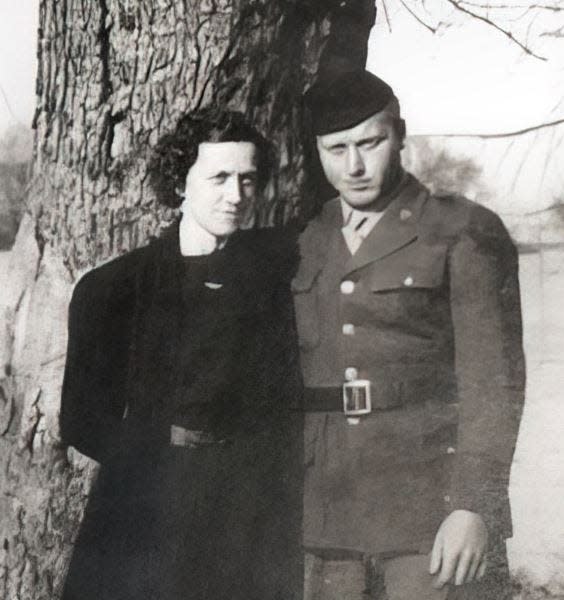
The battery commander was among those who died.
There are at two accounts of his death.
According to the citation awarding him the Silver Star, Capt. John Featherston and fellow troops landed and "quickly assembled available elements of his battery and moved to the pre-designated position area where his battery came under intense small arms fire from an enemy strong point.
"Capt. Featherston immediately organized an attack, firing on the house with one of his howitzers. He personally led a final assault on the enemy position. His aggressive and gallant action permitted artillery units to gain their positions with a minimum of casualties and deliver immediate supporting fire to the airborne crossing of the Rhine River."
The informal unit history puts it differently.
"Our battery commander, Captain Featherstone, led a patrol of men out shortly after we landed to investigate some small-arms fire that was being directed at us from a group of nearby houses. As he approached the building a shot rang out and the captain fell, mortally wounded. After clearing the houses, we discovered the sniper to have been a twelve year old German boy – who will never shoot another American soldier."
Opinion: Commemorating American soldiers' sacrifices began after Civil War
Eric Marotta can be reached at 330-541-9433, or emarotta@gannett.com. Follow him on Twitter @MarottaEric.
This article originally appeared on Akron Beacon Journal: Soldier who died in World War II operation remembered in Northfield

